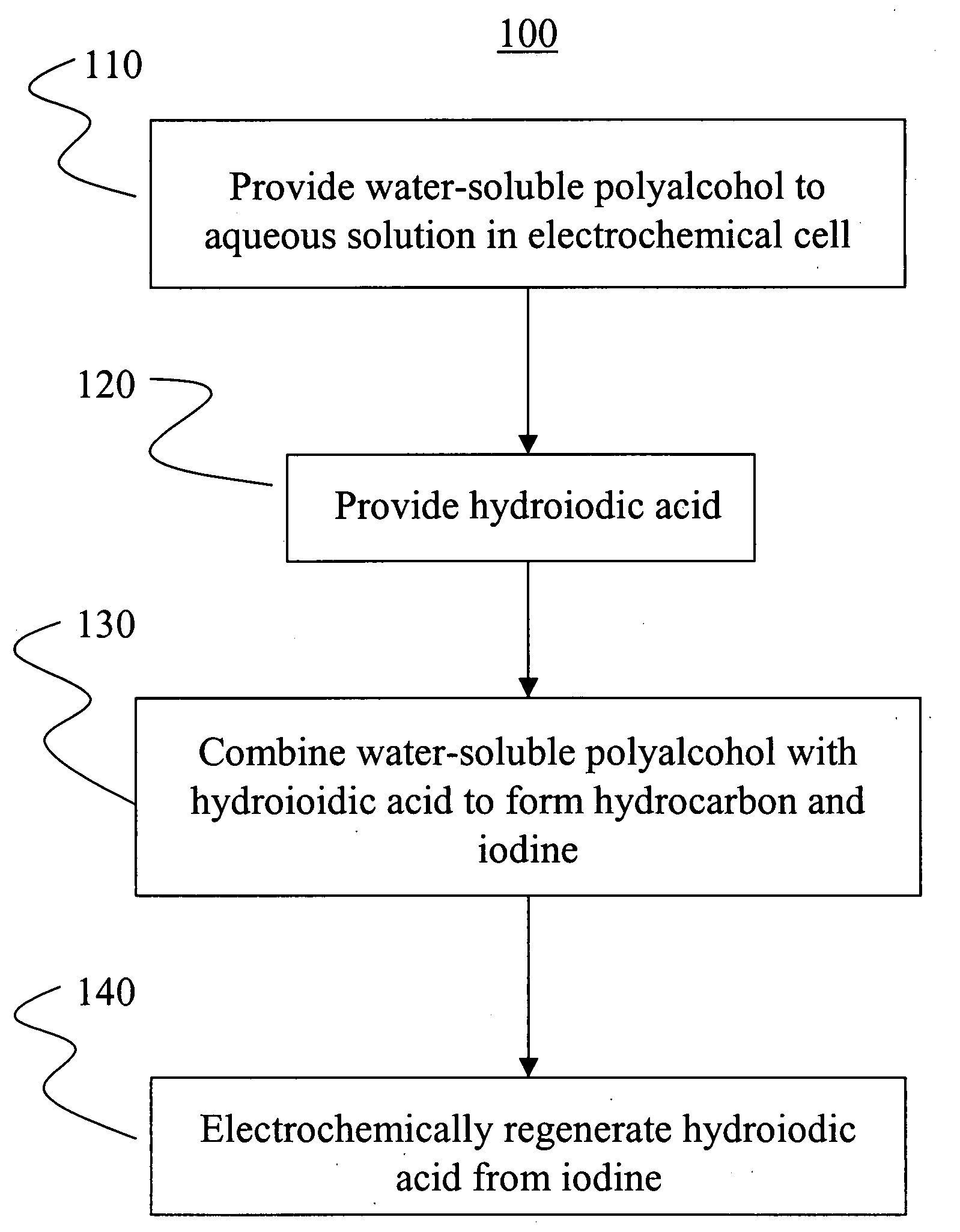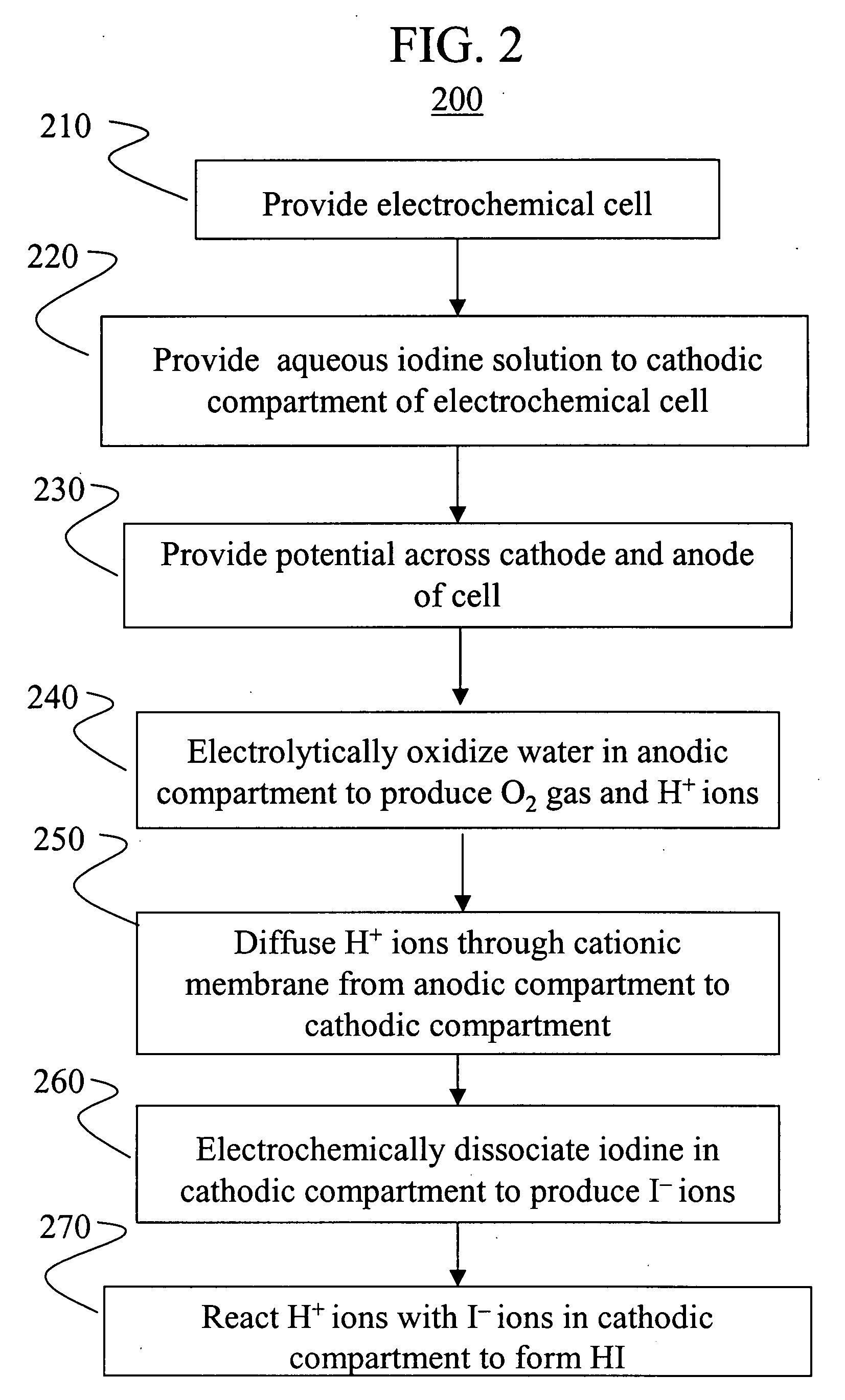Electrochemical conversion of polyalcohols to hydrocarbons
a technology of hydrocarbon conversion and electrochemical conversion, which is applied in the direction of electrolytic organic production, energy input, oxygen/ozone/oxide/hydroxide, etc., can solve the problems of overall process, hsub>3/sub>posub>3/sub>, and the use of hi as the cost of the carbohydrate conversion process described abov
- Summary
- Abstract
- Description
- Claims
- Application Information
AI Technical Summary
Benefits of technology
Problems solved by technology
Method used
Image
Examples
Embodiment Construction
[0016]In the following description, like reference characters designate like or corresponding parts throughout the several views shown in the figures. It is also understood that terms such as “top,”“bottom,”“outward,”“inward,” and the like are words of convenience and are not to be construed as limiting terms. In addition, whenever a group is described as either comprising or consisting of at least one of a group of elements and combinations thereof, it is understood that the group may comprise or consist of any number of those elements recited, either individually or in combination with each other.
[0017]Referring to the drawings in general and to FIG. 1 in particular, it will be understood that the illustrations are for the purpose of describing a particular embodiment of the invention and are not intended to limit the invention thereto.
[0018]For the purposes of understanding the invention, the term “hydrocarbon” is intended to mean compounds consisting of carbon and hydrogen. In s...
PUM
 Login to View More
Login to View More Abstract
Description
Claims
Application Information
 Login to View More
Login to View More - R&D
- Intellectual Property
- Life Sciences
- Materials
- Tech Scout
- Unparalleled Data Quality
- Higher Quality Content
- 60% Fewer Hallucinations
Browse by: Latest US Patents, China's latest patents, Technical Efficacy Thesaurus, Application Domain, Technology Topic, Popular Technical Reports.
© 2025 PatSnap. All rights reserved.Legal|Privacy policy|Modern Slavery Act Transparency Statement|Sitemap|About US| Contact US: help@patsnap.com



